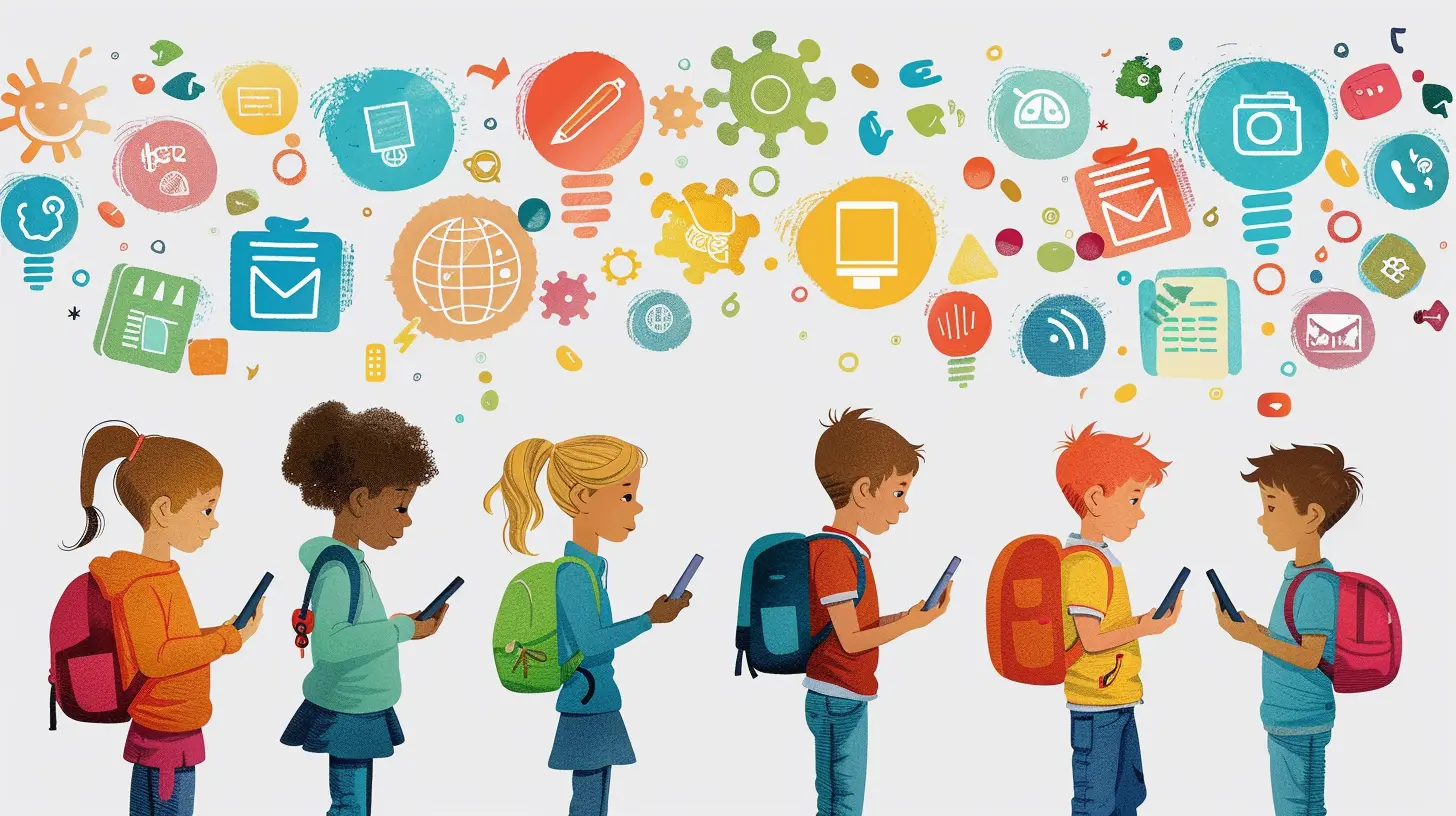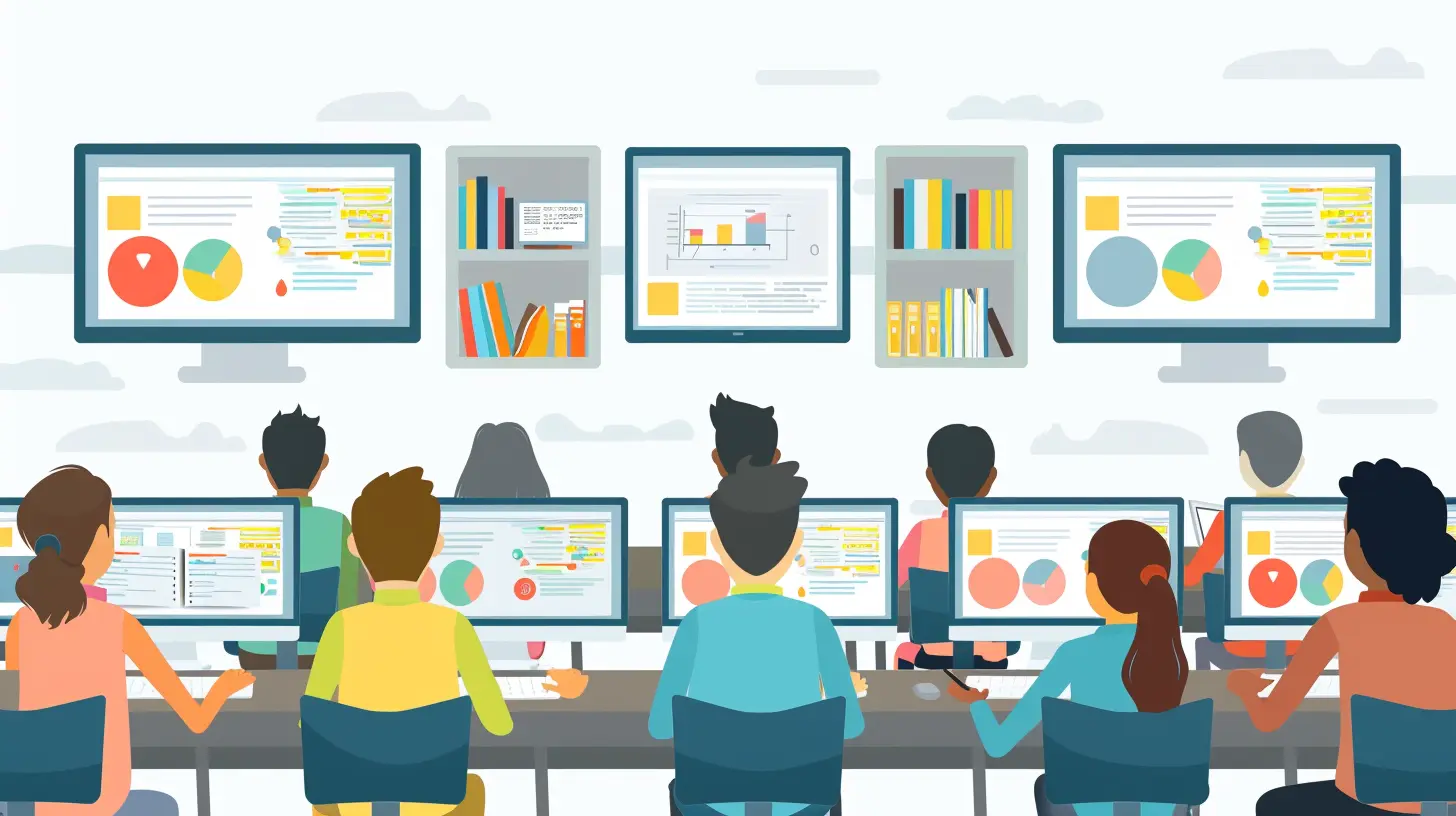Using Technology to Enhance Classroom Learning
31 October 2025
Let’s face it—technology is everywhere. We use it to order food, track our fitness, binge-watch shows, and even manage our calendars. So, why should classrooms be any different? The traditional chalk-and-talk method is slowly being replaced (or at least enhanced) by digital tools, smart devices, and online resources. Whether you're a teacher trying to spice up your lessons or a student wanting more interactive learning, technology offers exciting possibilities that can totally change the classroom game.
In this article, we’re diving deep into how using technology can elevate the learning experience for everyone involved. Buckle up, because we’re talking smartboards, apps, VR headsets, and much more—all serving the ultimate goal of better student understanding and engagement.
The Evolution of Classroom Learning
Let’s rewind a bit. Remember when classrooms were all about blackboards, textbooks, and handwritten notes? While that system did its job, it wasn't built for today’s fast-paced, digital generation. Think about it—students are digital natives. They’ve grown up with tablets, smartphones, and YouTube. Expecting them to fully engage with a static textbook is like asking someone to send a telegram instead of a text.That’s where tech steps in. Over the past few decades, we’ve seen an incredible shift. From overhead projectors to online learning platforms, the evolution has been swift and impactful. And the best part? This shift is just getting started.
Why Technology Matters in the Classroom
So, why should we care? What does tech actually bring to the table?1. Increases Student Engagement
Let’s be honest—students get bored. But when you throw in interactive videos, quizzes, and real-time polls, their attention perks right up. Tools like Kahoot!, Quizlet, and Nearpod make learning feel like a game, turning even the most reluctant learners into active participants.2. Encourages Personalized Learning
Every student learns differently. Some are visual learners, some prefer audio, and others need hands-on practice. Technology allows educators to cater to all these styles. Whether it’s through educational videos, podcasts, or simulations, tech makes it easier to offer personalized content that meets individual learning needs.3. Provides Instant Feedback
Remember waiting days or even weeks to get test results? Not anymore. With digital tools, both students and teachers can access grades and feedback almost instantly. This helps learners understand their mistakes and grow in real-time, not after the fact.4. Prepares Students for the Future
Let’s not forget—technology isn't just a learning tool. It’s a life skill. Familiarizing students with digital platforms, collaboration tools, and even coding encourages them to thrive in a tech-driven world. Think of it as giving them a head start in life, not just school.
Game-Changing Tech Tools in Education
Now, let’s break down what kinds of technology are actually making waves in classrooms.1. Smartboards and Interactive Displays
Say goodbye to dusty chalk and hello to interactive whiteboards. Smartboards allow teachers to display videos, write notes, and even interact with students in real time. It’s like turning the entire classroom into a touchscreen experience.2. Learning Management Systems (LMS)
Platforms like Google Classroom, Moodle, and Canvas have redefined how assignments are shared, submitted, and graded. These systems streamline communication between teachers and students, making classroom management a breeze.3. Educational Apps
There’s an app for literally everything. Want to improve vocabulary? Try Duolingo. Need help with math? Khan Academy has your back. Thousands of educational apps are available, providing subject-specific learning in a way that feels more like fun than work.4. Virtual and Augmented Reality
Imagine studying the solar system by actually “flying” through it, or exploring a human heart in 3D. VR and AR make abstract concepts tangible, offering immersive experiences that bring lessons to life. It’s like turning a science class into a field trip—without ever leaving the room.5. Gamification Platforms
Gamification is the secret sauce for engaged learning. Platforms like Classcraft and Prodigy use game-like elements—like rewards, challenges, and levels—to motivate students and boost participation.
The Role of Teachers in a Tech-Powered Classroom
Now, if you’re a teacher, you might be wondering—am I being replaced? Absolutely not. Technology is a tool, not a teacher. Educators remain the heart of the learning process. Tech just gives them more ways to connect with, inspire, and support their students.Think of teachers as pilots. The airplane (technology) assists the journey, but the pilot (teacher) is in full control. Teachers still create the learning environment, shape the curriculum, and guide students. But now they’ve got a whole bag of cool gadgets to help them do it better, faster, and more effectively.
Benefits That Go Beyond the Classroom
One of the coolest things about using tech in education is how it stretches learning beyond the four walls of a classroom.1. Accessibility and Inclusivity
For students with disabilities, technology is a game changer. Screen readers, voice-to-text tools, and adaptive software provide learning opportunities that were once difficult or even impossible.2. Collaboration Across Borders
Students can now work on projects with peers from different parts of the world. Video calls, cloud-based docs, and social media have turned the classroom into a global village. The possibilities here are endless.3. 24/7 Learning
Why should learning stop at the bell? With online resources, video lectures, and digital classrooms, students can learn at their own pace, at any time. Whether it’s a late-night revision or weekend prep, tech makes learning a 24/7 affair.Challenges Worth Mentioning
Okay, time for a reality check. No tool is perfect, and technology in education comes with its own set of hurdles.1. Digital Divide
Not every student has access to a reliable internet connection or digital devices at home. This creates a gap that schools and policymakers need to address. Equal access to tech is crucial for fairness in education.2. Distraction Factor
Let’s be real—tech is a double-edged sword. The same device that’s used for learning can also be a gateway to endless distractions. Social media, games, or YouTube can easily pull students away from the task at hand.3. Teacher Training
Introducing tech into classrooms isn’t a plug-and-play situation. Teachers need proper training to use it effectively. Without this, even the best tools can go underused or misused.How to Effectively Integrate Technology in the Classroom
So, how do we make technology work for us, instead of against us?1. Start Small
Don’t feel pressured to adopt everything at once. Begin with one or two tools—maybe a quiz app or a learning platform—and build from there. The key is to feel comfortable and stay consistent.2. Focus on the Why, Not Just the What
Use technology with purpose. Don’t just introduce a tool because it’s trendy. Ask yourself—how does this enhance learning? Will it help students understand better, collaborate more, or stay engaged longer?3. Make It Collaborative
Try tech-based group projects or shared online workspaces like Google Docs. These not only teach teamwork but also mimic real-world professional environments where collaboration is key.4. Be Open to Feedback
Ask students what’s working and what’s not. They’re the end-users, after all. Their input can guide you toward better tools and teaching methods.The Future of Technology in Education
What’s coming next? AI tutors, data-driven learning, and even more immersive virtual experiences are just around the corner. Imagine having a personalized educational assistant powered by artificial intelligence. Or walking through historical events in a VR headset. The future looks bright—and incredibly exciting.But here's the kicker: no matter how advanced the tech gets, it will always need a human touch. Empathy, encouragement, and creativity can't be programmed. That’s where educators will always shine.
Final Thoughts
At the end of the day, using technology to enhance classroom learning isn’t about replacing the old system—it’s about upgrading it. It's like switching from a bicycle to an electric scooter. You're still moving forward, but faster, smarter, and with less effort.Whether you're a student, teacher, or parent, embracing classroom technology means opening doors to a more engaging, inclusive, and effective way of learning. So why not plug in, power up, and see where it takes us?
all images in this post were generated using AI tools
Category:
Teacher ResourcesAuthor:

Olivia Chapman
Discussion
rate this article
1 comments
Zara Franklin
Embracing technology in the classroom opens doors to creativity and engagement! Let’s empower our students with innovative tools, fostering a dynamic learning environment where curiosity thrives and every learner can shine. The future is bright!
October 31, 2025 at 6:04 AM


